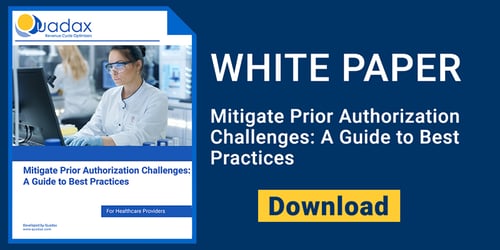Sadly, surprise billing (i.e., a patient receiving an unexpected bill for healthcare services) is very much a reality for many patients for a myriad of reasons.
Root Causes
In emergency situations, patients have little say when an ambulance arrives to dictate which emergency department to be rushed to or which doctors provide care. Similarly, patients don’t have any say in which ambulance company provides their ride to the hospital. And, even though the hospital is in-network, the doctors providing the care may be out-of-network, resulting in a surprise bill. A study conducted by Yale researchers found that of 1 in 5 emergency visits, patients attended in-network hospitals but were treated by out-of-network physicians.
Undergoing a common surgery provides another opportunity for a patient to receive a surprise bill. A recent study, published in JAMA, found that among commercial-insured patients who underwent common in-network surgery, 20% of these procedures involved out-of-network charges. “These findings suggest that, in surgical settings, the problem of out-of-network billing is not restricted to a single specialty or setting. Surgical care is inherently multidisciplinary and requires a team of clinicians with payer contracts that are rarely intentionally coordinated,” researchers said in the study.
The Narrow-Network Phenomenon
In some geographic markets, the availability of certain specialists may be limited. In other cases, a few providers may enjoy having a monopoly power in particular areas. As a result of these scenarios, insurance plans don’t have much negotiating power, so these providers remain out-of-network. When health plans don’t contract with these providers, they are ‘narrowing the network’ of available providers.
Out-of-network providers charge more for their services than in-network, but in the case of anesthesiologists and emergency medicine physicians, charges are about five times greater than the equivalent Medicare payment. A Kaiser Family Foundation survey showed that 40% of patients have received a surprise bill in the last 12 months and an alarming 67% said that receiving a surprise bill would be a serious cost concern.
Can Legislation Enforce Change?
Not surprisingly, there’s no clear answer on what it would take to end surprise billing. Currently, there’s no federal law to protect consumers from surprise bills, and there are some state laws, but ultimately the federal law prevails and consumers who get their insurance from employers with self-funded plans aren’t protected under state laws.
As consumers are responsible for more and more of their healthcare, the issue of surprise billing is not going to be alleviated. On the contrary, the issue has raised interest at the federal level and prompted a series of federal proposals in the last session of Congress.
What Can You Do?
As a provider, be completely transparent with your patients. If there’s a chance an out-of-network provider will be part of their care, inform them ahead of time so they know what to expect. Even if you can’t communicate costs or specific details, just simply informing them of the possibility will improve your patient satisfaction.
Second, if you don’t have processes in place to provide patients with the transparency they are demanding – around coverage benefits and costs – consider looking into a patient access management platform. The right platform will empower your staff to inform patients up-front while leading to higher patient satisfaction scores and increased reimbursement.
 Ken Magness is a focused healthcare professional with more than a decade of experience in helping clients understand the true value of automation in the revenue cycle management process. As the Strategic Initiatives Leader at Quadax, Ken and his team are passionate about connecting with healthcare providers to help them create and leverage the appropriate technology solutions to optimize the revenue cycle process and improve the experience of their patients and staff.
Ken Magness is a focused healthcare professional with more than a decade of experience in helping clients understand the true value of automation in the revenue cycle management process. As the Strategic Initiatives Leader at Quadax, Ken and his team are passionate about connecting with healthcare providers to help them create and leverage the appropriate technology solutions to optimize the revenue cycle process and improve the experience of their patients and staff.





 Ken Magness is a focused healthcare professional with more than a decade of experience in helping clients understand the true value of automation in the revenue cycle management process. As the Strategic Initiatives Leader at Quadax, Ken and his team are passionate about connecting with healthcare providers to help them create and leverage the appropriate technology solutions to optimize the revenue cycle process and improve the experience of their patients and staff.
Ken Magness is a focused healthcare professional with more than a decade of experience in helping clients understand the true value of automation in the revenue cycle management process. As the Strategic Initiatives Leader at Quadax, Ken and his team are passionate about connecting with healthcare providers to help them create and leverage the appropriate technology solutions to optimize the revenue cycle process and improve the experience of their patients and staff.


 Ken Magness is a focused healthcare professional with more than a decade of experience in helping clients understand the true value of automation in the revenue cycle management process. As the Strategic Initiatives Leader at Quadax, Ken and his team are passionate about connecting with healthcare providers to help them create and leverage the appropriate technology solutions to optimize the revenue cycle process and improve the experience of their patients and staff.
Ken Magness is a focused healthcare professional with more than a decade of experience in helping clients understand the true value of automation in the revenue cycle management process. As the Strategic Initiatives Leader at Quadax, Ken and his team are passionate about connecting with healthcare providers to help them create and leverage the appropriate technology solutions to optimize the revenue cycle process and improve the experience of their patients and staff.


